2019 Films
The Biggest Little Farm chronicles the eight-year quest of John and Molly Chester as they trade city living for 200 acres of barren farmland and a dream to harvest in harmony with nature. Featuring breathtaking cinematography, captivating animals, and an urgent message to heed Mother Nature's call, The Biggest Little Farm provides us all a vital blueprint for better living and a healthier planet.

A film of science exploration and adventure!
Join us for a wild ride of adventure above, on, and below the amazing Driftless Region! Emmy-winning filmmakers George How, Tim Jacobson, Rob Nelson, and Neil Rettig have teamed up with Jonas Stenstrom of Untamed Science, to capture fantastic footage of the Driftless Region, and weave it into a compelling story, in a way never done before. You'll soar over ancient rugged bluffs, skim the surface of primordial rivers, venture deep underground to mysterious secret worlds, marvel at sacred archaeological treasures, and hang perilously over massive rock cliffs. One thing for sure, you'll never forget this film, and you'll want to share it with everyone you know!
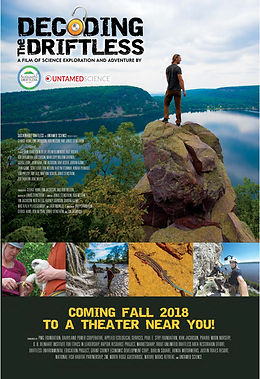

A path to soil health and food independence
Farmer's Footprint is a coalition of farmers, educators, doctors, scientists, and business leaders aiming to expose the human and environmental impacts of chemical farming and offer a path forward through regenerative agricultural practices.
Green Fire: Aldo Leopold and a Land Ethic for Our Time
The first full-length documentary film ever made about legendary conservation thinker Aldo Leopold, Green Fire: Aldo Leopold and a Land Ethic for Our Time explores Leopold's extraordinary career and his enduring influence, tracing how he shaped the modern conservation movement and continues to inspire projects all over the country that connect people to the land.


At five feet tall, and with a wingspan of over seven feet, the whooping crane has the distinction of being North America’s tallest bird and, sadly, also one of its rarest. Habitat loss caused by European settlers reduced the population to just 15 birds by the 1940s. Since then, in an intense effort to protect and restore the species, a broad coalition of NGOs, private interests, and government agencies has worked collectively and tirelessly to nurture the remaining wild flock to its current population of about eight hundred

This one-hour production travels from the Central American rain forest to the hidden valleys of western Wisconsin's Driftless area. From Caribbean beaches to crane marshes along the Russian/Chinese border, we learn how communities and private landowners are taking responsibility for their local flora and fauna. Community conservation is at the core of the current debate on environmental policy. Former secretary of the Interior Bruce Babbitt addresses this idea while visiting ecologist Aldo Leopold's legendary "shack" along the Wisconsin River. Leopold's daughter, Nina Leopold Bradley, and his biographer, Curt Meine, tell how his 1948 book, "A Sand County Almanac," provides a context for Community Conservation.
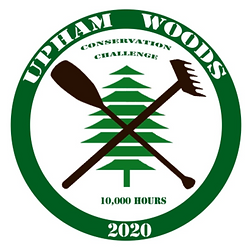
About the film:
Documentary • USA • 2019 • 5 MIN
Director/Writer/Producer: Upham Woods Outdoor Learning Center
The conservation program at Upham Woods seeks to engage people, especially youth, with the management of our land and connect them with Wisconsin's established conservation ethic. Since the beginning of Upham, youth involved in conservation have been a part of who we are. We are celebrating our commitment to conservation by contributing 10,000 hours of service to this landscape by the end of 2020. Our 10K by 2020 Conservation Challenge aims to get us closer to restoring our oak forest and protecting our unique northern system
About the filmmaker:
Upham Woods, part of University of Wisconsin – Madison Division of Extension, sits along the Wisconsin River in Wisconsin Dells, and serves as a venue for environmental education opportunities for youth and adults. Inspired by the Upham sisters, who donated this property to the University in 1941, our programming is built upon the integration of three pillars: conservation, water, and STEM education. We strive to help our visitors develop a deeper understanding of both Upham Woods and the landscapes they live in every day.

About the filmmaker:
About the film:
Documentary • USA • 2015 • 34 MIN
Director/Writer/Producer: Charles Johannsen

Bracelets for Birds is about the Sand Bluff Bird Observatory (SBBO) in Winnebago County, Illinois, telling the hows and whys of banding migratory birds. SBBO has trapped, banded and released 350,000 birds since it began in 1967. In a typical year, the banding station puts up nets and starts banding spring migratory birds in late March. During autumn, SBBO sets up additional facilities for trapping and banding migrating hawks and owls. Studying thousands of birds over decades brings to light changes in bird populations and the issues facing birds today. The video features amazing birds, beautiful still photographs, anecdotes, and scientific information. SBBO is an all-volunteer organization that is one of the largest (in number of birds banded) in this part of the continent. The facility is open to the public and free to visit.
Charles Johannsen is an independent filmmaker who has made short films and videos for more than 45 years. He grew up in the greenhouse business, so has a plant background and considers himself an environmentalist. This led to him produce the documentary, “Aldo Leopold at Faville Grove”, about the beginnings of prairie preservation and ecological restoration. He has made the annual promotional/fundraising videos for Severson Dells Nature Center each of the last 11 years, as well as doing video work for other non profits and government agencies. After filming at Sand Bluff Bird Observatory for the local forest preserve district, he embarked on making a documentary about the bird banding station, its people and birds. He’s a board member of Sinnissippi Audubon Society and has successfully raised a baby crow, a baby flying squirrel, and a juvenile hummingbird.
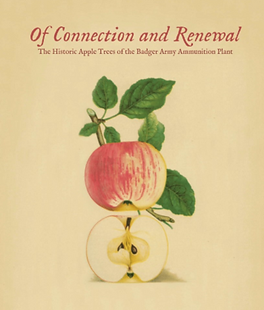
About the film:
Documentary • USA • 2018 • 9 MIN
Director/Producer Anders Gurda; Writer: Curt Meine, Anders Gurda

Immediately following the engagement of the US in World War II, 80 farm families on the Sauk Prairie were given 60 days to leave their farms and find a new home, as the Army needed almost 10,000 acres to construct a massive munitions plant. Homes, barns, and outbuildings were removed or destroyed, as were the schools and churches associated with the farm community. All that remained were landscape plants like lilacs and daylilies and a number of apple trees planted by the farmers and their ancestors. During bird surveys on the Badger Army Ammunition Plant in 1998, DNR biologist Mike Mossman discovered the “historic apple trees,” trees that survived WWII! In the intervening years, these trees have been located, mapped and are now being preserved and propagated to memorialize the original Sauk Prairie farmers and their descendants.
About the filmmaker:
Anders Gurda is an agroecologist, educator, and film producer who received his B.S. degree from Northland College and his M.S. from the University of Wisconsin-Madison. Anders’ master’s research on grazing as a conservation tool was undertaken in Sauk County at the USDA Dairy Forage Research Center. In his current position with Pipeline Foods in Minneapolis, he works to promote regenerative agriculture and the production of organic grains, and to connect farmers with conscientious consumers. Through his video outlet Windborne Media, Anders continues to craft films at the intersection of conservation and agriculture.

About the film:
Documentary • USA • 2019 • 4 MIN
Director/Writer/Producer: Matt Oehmichen
Leopold wrote that conservation is a state of harmony between us and the land. In Wisconsin we have lost that balance. Our state is facing a water crisis from loss of soil health on farmland. Agriculture is not blameless, but it is the solution, by implementing conservation practices like minimum tillage, adaptive rotations and continuous cover. In this film a small town farm kid laments the issues, but is optimistic, encouraged from the great work being done by those who live out on the country roads. This isn’t Wisconsin. It’s time we move forward, and get to work.
About the filmmaker:
Matthew Oehmichen lives on the same farm he grew up on, working alongside his family at an independent retail company, Short Lane Ag Supply LLC. No longer milking cows, he helps manage the company and farm the land his grandfather worked before him. Growing up, he was instilled with a strong appreciation for the natural environment, and the knowledge that to protect it is to protect your future. "The worst thing you can do is nothing" his dad would also say, and with that slogan Matthew has been pursuing vested interests concerning his family, farming, and community. A graduate of University of Wisconsin-Stevens Point, he is a father of 3, happily married, and a lover of fine spiced rum.

About the filmmaker:
About the film:
Documentary • USA • 2018 • 16 MIN
Director: Jason Whalen, Chris Zuker; Music: John Berry; Produced by Fauna Creative

Each year, millions of birds migrate through the Great Lakes between northern breeding grounds and tropical overwintering grounds. The Fight for Flight highlights this natural phenomenon and the people who interact with these birds. As technology progresses, we are learning more about how we impact these birds during migration. The film tells stories of the research, rehabilitation and conservation involved in understanding and protecting the birds making this epic journey.
Fauna Creative is a production company based in Grand Rapids, Michigan. Jason Whalen and Chris Zuker work together to produce films and client work, with a focus n science, conservation and appreciation for the outdoors.
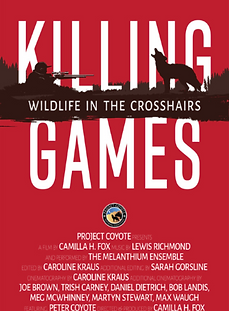
About the film:
Documentary • USA • 2018 • 30 MIN
Director/Producer/Writer: Camilla H. Fox; Editor/Cinematographer: Caroline Kraus; Composer: Lewis Richmond; Editor: Sarah Gorsline

On any given weekend, some of America's most iconic wildlife are massacred in wildlife killing contests. Bloodied bodies are weighed and stacked like cords of wood, and prizes are awarded to the “hunters” who kill the largest or the most of a targeted species. Coyotes, bobcats, wolves and foxes are common victims of these contests; children as young as 10 are encouraged to participate. Fueled by anti-predator bias, these legally sanctioned but relatively unknown contests are cruel and foster ignorance about the critical role apex predators play in maintaining healthy ecosystems. In the groundbreaking exposé Killing Games, Project Coyote Advisory Board Member Peter Coyote with environmentalists, ranchers, public officials and Native Americans brings these shadowy contests to light and speaks out against this hidden war on wildlife. Killing Games inspires viewers to call on their state and local legislators to ban these brutal contests where wildlife become living targets.
About the filmmaker:
Director and Producer Camilla H. Fox is the founder and executive director of Project Coyote, a national non-profit organization based in Northern California that promotes coexistence between people and wildlife and compassionate conservation through education, science, and advocacy. She has authored over 70 publications and produced the award-winning documentary Cull of the Wild ~ The Truth Behind Trapping. Among her any awards are Humanitarian of the Year from the Marin Humane Society, Christine Stevens Wildlife Award from the Animal Welfare Institute, one of the 100 Guardian Angels of the Planet, Conservationist of the Year Award by the John Muir Association., and Grassroots Activist of the Year Award by the Fund for Wild Nature.
Sarah Gorsline is a video editor and post production consultant. She enjoys the collaborative aspect of this work, and the moment during a project when the disparate talents of the crew become a cohesive vision of the work itself.
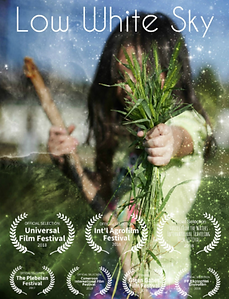
About the film:
Documentary • USA • 2017 • 33 MIN
Director/Editor: Magdalena Reilly, Joseph Reilly; Writer: Joesphy Reilly; Director of Photography: Magdalena Reilly
Low White Sky is an exploration of alternatives to our current agricultural systems. The film focuses on vertical farming, permaculture and urban gardening while featuring interviews with Dr. Dickson Despommier and Tao Wimbush. The filmmakers envisioned it as a meditation and memory while infusing traditional aspects of documentary film making, to explore solutions that can be achieved in our society today.
About the filmmaker:
Magdalena Reilly is a Polish-American photographer who is passionate about the environment. She
studied psychology & film production at Brooklyn College. She has been inspired by the photography of
Ansel Adams—having visited Yosemite, Grand Canyon and Yellowstone in her youth—and by the films
of Federico Fellini.
Joseph Reilly studied City Planning at San Diego State University. His major film influences include
Godard and Kubrick. Joseph believes there are no rules in cinema and that one should follow their passion
and vision for filmmaking.
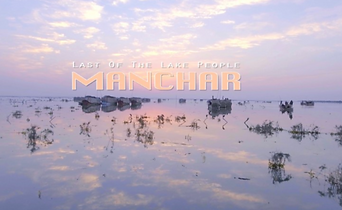
About the filmmaker:
About the film:
Documentary • Pakistan • 4 MIN
Director: Aftab Abbasi; Producer: Tauseed Haider; DOP: Javed Akhtar; Editor: Kamran Fazal
Manchar Last of the Lake People is aimed to raise awareness about the dire situation the ecology of Machar faces. Manchar is one of the biggest lakes of Asia that used to be home to thousands of fishermen, migratory birds from across the globe and a flourishing thriving flora sustaining wide varieties of fauna especially fish. It is a story of a paradise lost due to the pollution caused by an industrial drain which has all but destroyed the ecosystem of Manchar and along with it the livelihood of the lake people.
I graduated the National College of Arts in Lahore, Pakistan in 2009, in the pioneering department of film making. I worked for various top-of-the-line news channels and production houses in a decade of field experience, honing my skills and expertise by constant experimentation. From technical know-how and hands-on skill, to the play of style and treatment, experience has taught me how to mold narratives for maximum impact for any story. A mesmerizing place of immense beauty and hospitality, Manchar stands out as one of the most memorable places for me personally. The heartache attached to its memory is painful yet I hope that one day the effects of pollution can be undone and the birds can once again fly back to their summer home in Manchar from the frozen lakes of Siberia.
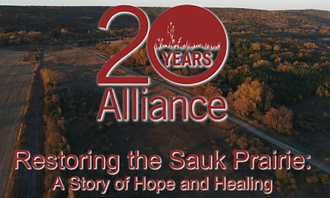
About the film:
Documentary • USA • 2018 • 27 MIN
Director: Kurt Wenger, Jeff Elsoffer; Writer: Charlie Luthin, Curt Meine; Producer: Kurt Wenger, Jeff Elsoffer

When the US Army announced in 1997 that it was decommissioning the 7,400- acre Badger Army Ammunition Plant between Baraboo and Sauk City, a group of citizens joined together to craft and promote a "green vision" for the old Army facility. Through determination, perseverance and pluck, the group prevailed and the property has become a large open area, half of which is managed by the Wisconsin DNR as the newest addition to the state park system. This 26 -minute video is the 20-year story of the transformation of a military facility with 1400 buildings into a green space open to the public for diverse recreational and educational activities.
About the filmmaker:
Kurt Wenger and Jeff Elsoffer co-produced and directed Restoring the Sauk Prairie: A Story of Hope and Healing. Kurt, a graduate of Sauk Prairie High School and UW-Oshkosh, lives in Sauk Prairie, Wisconsin. A professional videographer for over 20 years, his company Drop Frame Productions has won numerous awards. Jeff, a graduate of UW-Madison, is a writer and media producer from Black Earth. They have collaborated on a variety of video projects including EPA ENERGY STAR conservation videos and the TV cooking show Cooking the Casbah.
The Sauk Prairie Conservation Alliance was founded as a loose coalition in 1997 when the Army announced that it would decommission the Badger Army Ammunition Plant. This group of citizens crafted a community response—a "green vision", which prevailed through various decision-making steps. The Alliance is a member-supported non-profit organization that supports public education, ecological restoration and research on the Badger lands.
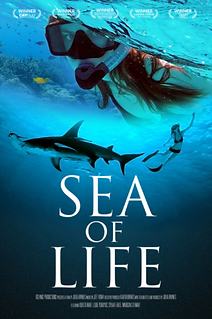
About the film:
Documentary • CANADA • 2018 • 4 MIN
Director/Producer/Writer: Julia Barnes
I never intended to become a filmmaker but when I watched Rob Stewart’s Documentary Revolution everything changed. I was 16 years old, learning for the first time that the world’s coral reefs, rainforests and fisheries are expected to disappear within my lifetime. Every species I loved, every ecosystem we depend on was in jeopardy. Action became a necessity and the journey to make Sea of Life began. I bought a couple of cameras, learned to dive, and set out on a mission to expose the biggest threats facing the ocean. This is an excerpt from the feature-length film, Sea of Life.
About the filmmaker:
Julia Barnes is the award-winning filmmaker behind the feature documentary Sea of Life. For as long as she can remember Julia has been passionate about the natural world.

About the film:
Documentary • UNITED KINGDOM • 2018 • 16 MIN
Director/Writer/Producer: Catherine Brookes; Narrator: Sally Bailey; Music: Jason Williams; Camera/Sound Assistant: Catalina Aristizabal
Treasures from the Tides tells the story of one small community’s fight to protect the sea turtles of El Salvador. The precious turtle eggs laid on these shores have long been threatened by poachers, but a dedicated all-female local team is providing hope for this vulnerable species. As awareness rises about the shocking impacts that ocean plastics and climate change are having on our marine species, a lesser-known threat is often overlooked. This film aims to shed light on the vast-scale issue that is the poaching of sea turtle eggs, while giving recognition to an amazing community of people whose dedication to turtle conservation is truly inspirational.

About the filmmaker:
Catherine is a British biologist and aspiring self-shooting wildlife television producer with a passion for
creating films that inspire others to appreciate and preserve the beauty of the natural world.

About the film:
Documentary • MEXICO • 2018 • 15 MIN
Director: Jorge Ramos Luna; Producer/Writer: Juan Carlos Serio Silva
Wildlife conservation is a community effort. In the southern state of Tobasco, Mexico, Black Howler Monkeys are under contant threat due to the loss of their habitat. At the Estación de Investigación Primatológica y Vida Silvestre in Balancan, research and education focuses on the ecology, behavior, human interactions and conservation of this species. This film portrays the close relationship of these efforts, and this species with local people. It documents how this community and conservationists came together to revitalize the site after the loss of the station’s director, and thus continue their collective dream to conserve the Black Howler.
About the filmmaker:
Producer and director Jorge Ramos Luna is a 24 year old, Mexican biologist and science communicator working on wildlife conservation through the use of documentary films. He has directed, photographed or edited several independent wildlife documentaries, and is currently earning a master’s degree at the Instituto de Ecología of Xalapa, Veracruz, Mexico. Jorge is a founding member of Colectivo Hojarasca (Leaf Storm Collective), a student organization that addresses environmental issues through video essays, short films and public activities. Without any professional training, members learned how to produce films on their own.
Executive producer and science advisor Juan Carlos Serio Silva is a Mexican-based primatologist. For the past 30 years, he has worked on conservation of all three Mexican primate species and their forest habitats, which depends on human connection with the animals. He is the lead researcher of the “Grupo de Estudios Transdisciplinarios en Primatología” at the Instituto de Ecología.
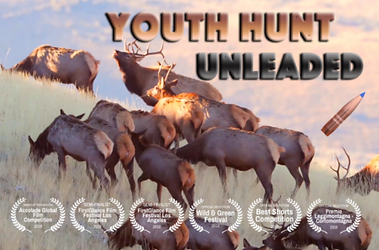
About the film:
Documentary • USA • 2018 • 15 MIN
Director: Cherin Spencer Bower, Craig Jourdonnais, Mike McTee, Mike Henning, Alan Ramsey, Philip Ramsey; Producer: Cherin Spencer Bower
MPG Ranch is a conservation property in western Montana with an education program that promotes youth hunting. This video follows hunters as they pursue antlerless elk on the ranch during the 2017/2018 season and covers our use of non-lead ammunition. We use public hunting to control deer and elk populations. MPG Ranch hunt coordinators Dr. Philip Ramsey, Mike Henning, and Craig Jourdonnais guide the hunters. Mike McTee conducts studies on non-lead hunting and the environmental impact.
About the filmmaker:
Cherin has always had a camera attached to her hip to capture all forms of wildlife and scenic landscapes.
She moved to Montana in 2015 to observe migrating raptors at MPG Ranch and continued to document
wildlife through her lens, which progressed into a videography career. She now films and photographs
wildlife and biological processes to create documentaries about research projects and environmental
concerns across a 16,400 acre conservation property in Western Montana. Cherin also enjoys hunting deer
and elk in Montana.
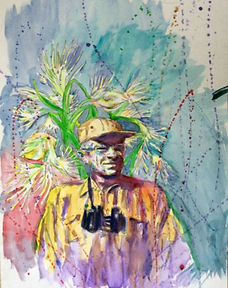
About the film:
Documentary • USA • 2004 • 44 MIN
Director/Producer : Charles Johannsen
This is the story of Professor Aldo Leopold’s efforts at Faville Grove, near Lake Mills in Southeastern Wisconsin, marking the beginning of prairie preservation as a public endeavor. The video also touches upon the beginnings of prairie restoration: the public prairie plantings at the UW Arboretum, and the Leopold family project at “the shack” in Sauk County. Highlights of the video include interviews with three of Leopold’s children, one of his graduate students, and with others who knew him. Also included is an essay, “Exit Orchis”, written by Professor Leopold, but never published. Botanical footage of prairie plants, especially the rare Eastern Prairie Fringed Orchid, is interspersed throughout the film. Rounding out the story are archival photos of Wisconsin’s past, balanced with more recent activities of the local conservation/restoration community.
About the filmmaker:
Charles Johannsen is an independent filmmaker who has made short films and videos for more than 45 years. He grew up in the greenhouse business, so has a plant background and considers himself an environmentalist. This led to him produce the documentary, “Aldo Leopold at Faville Grove”, about the beginnings of prairie preservation and ecological restoration. He has made the annual promotional/fundraising videos for Severson Dells Nature Center each of the last 11 years, as well as doing video work for other non-profits and government agencies. After filming at Sand Bluff Bird Observatory for the local forest preserve district, he embarked on making a documentary about the bird banding station, its people and birds. He’s a board member of Sinnissippi Audubon Society and has successfully raised a baby crow, a baby flying squirrel, and a juvenile hummingbird.
Download a copy of the complete 2019 Film Guide Here:
Download a copy of the 2019 Film Schedule Here:
Subscribe for Updates
Join our email list and get updates on films and our events.

